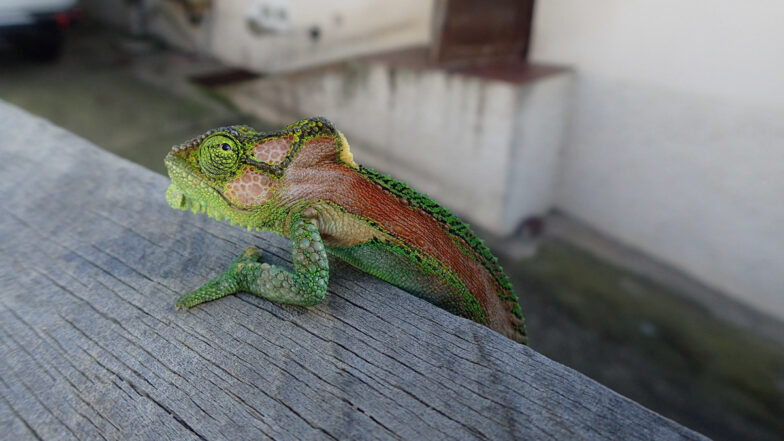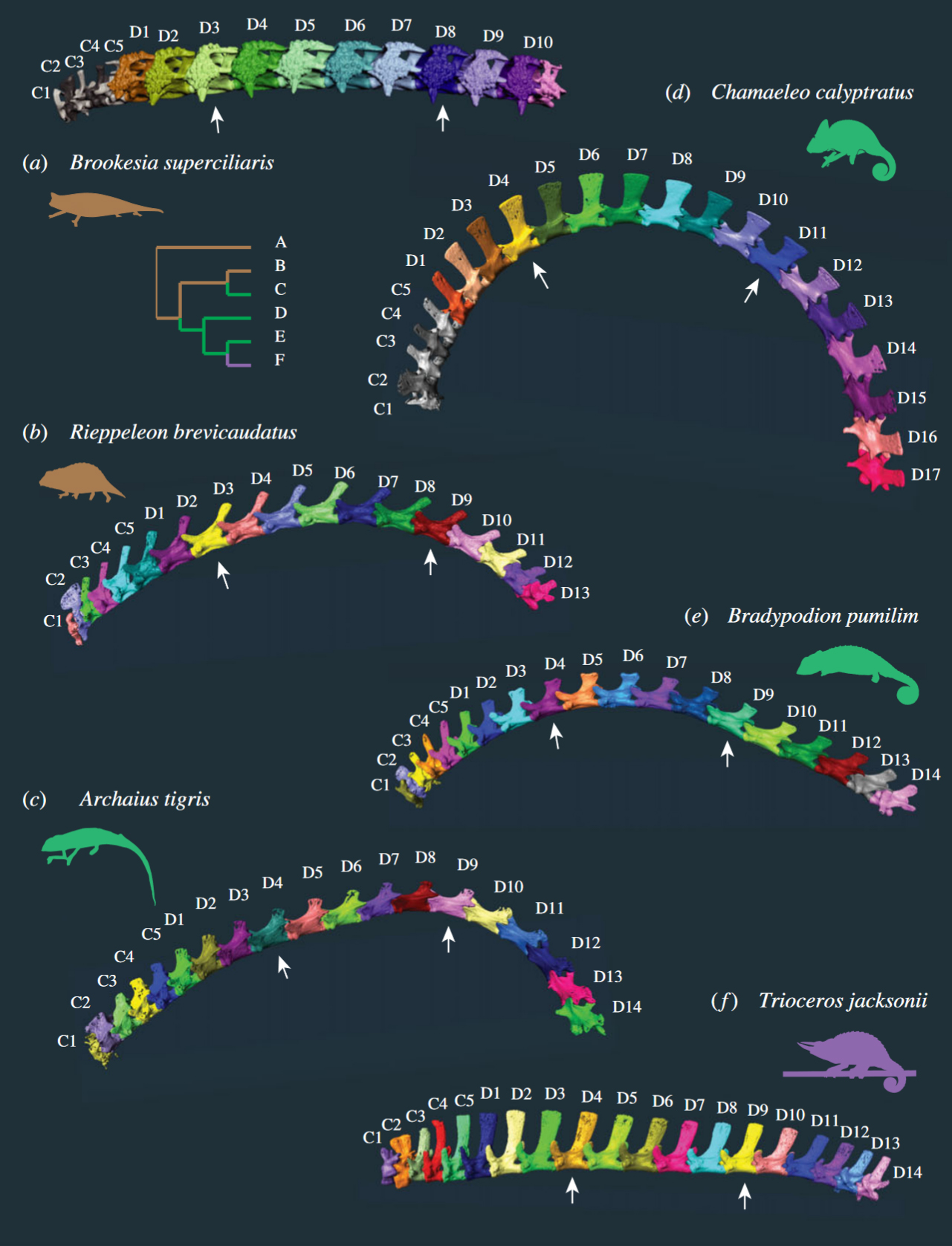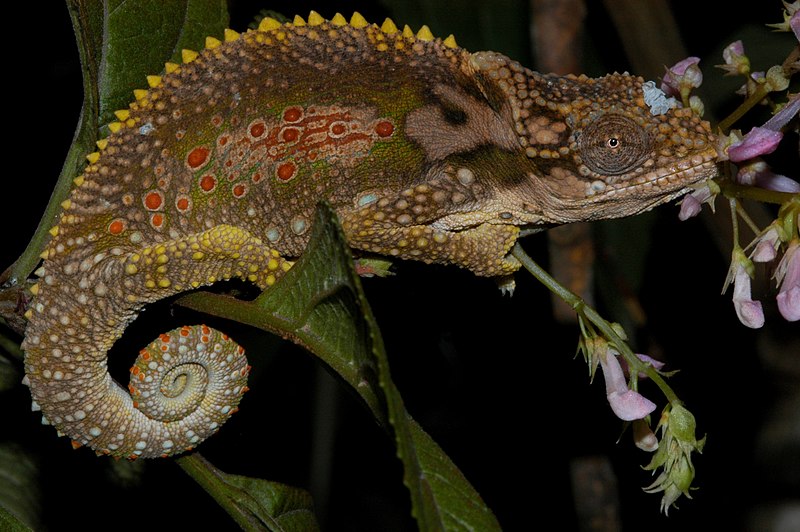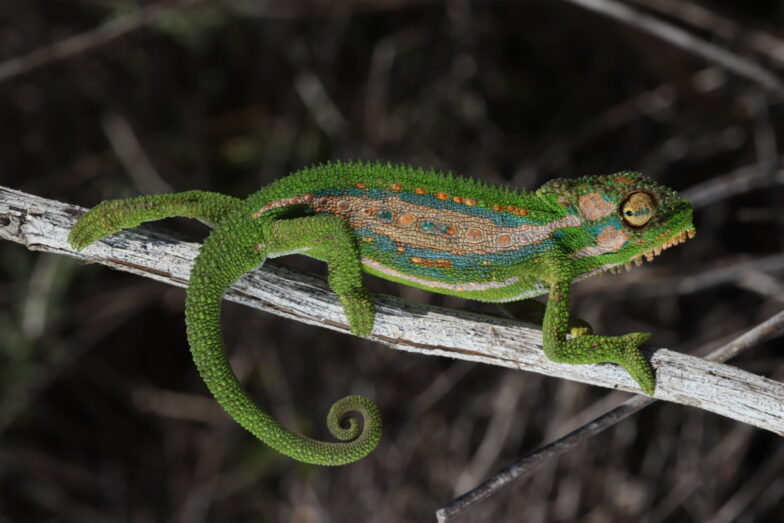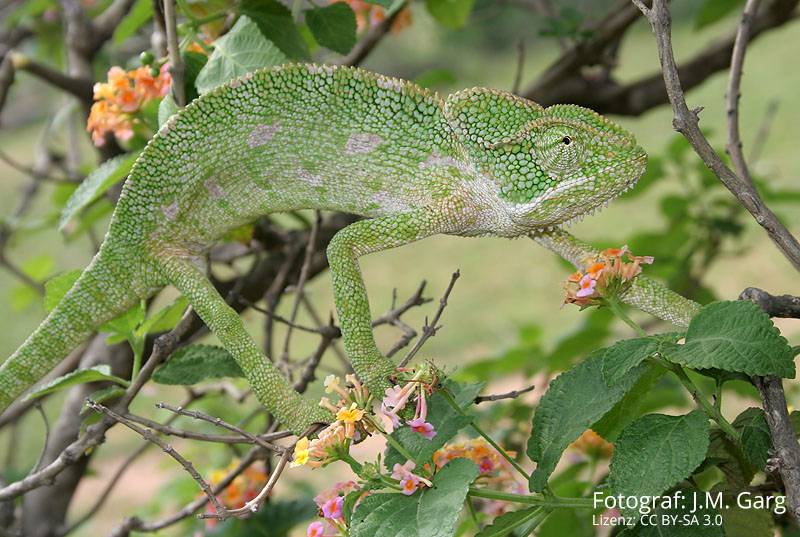The archives of museums and other zoological collections still contain a lot of single-gene fragment data. Although it is now relatively easy to decode entire genomes and prepare material for storage, this was not the case for a long time. Scientists at the University of Johannesburg (South Africa) have now investigated whether and, if so, which components of these single genes in dwarf chameleons can provide information on the entire genome with regard to the creation of phylogenetic family trees.
Samples were taken from 44 dwarf chameleons in the form of cut-off tail tips during various expeditions between 2010 and 2022. The sampled animals were captured and released in the Eastern Cape, KwaZulu-Natal, Limpopo, Mpumalanga, Northern Cape and Western Cape provinces. They belonged to the species Bradypodion barbatulum, caeruleogula, caffrum, damaranum, gutturale, melanocephalum, ngomeense, occidentale, pumilum, setaroi, taeniabronchum, thamnobates, transvaalense, ventrale, venustum as well as candidate species from Greytown, Kamberg. Karkloof Forest and Gilboa Forest in KwaZulu-Natal. An existing mitogenome of a Chamaeleo chamaeleon was used as a reference genome. In addition, the mitogenomes of seven other genera were loaded from GenBank for comparison.
DNA was extracted from all samples and phylogenetically analysed using Geneious Prime and IQ-Tree, among others. A total of 22 different alignments were created: a complete mitogenome alignment (without tRNA), 15 alignments of individual loci, the short fragment of 16S, a frequently used COI fragment, a concatenation of 16S fragment with ND2, a concatenation of ND2 and ND5, a concatenation of the two ribosomal subunits and a concatenation of all protein-coding genes (PCG). A statistical analysis of the data followed.
The results showed that the complete mitogenome topology is largely consistent with the previously published phylogenies of African dwarf chameleons from ND2-16S concatenations. The phylogeny based on the ND2 fragments proved to be more stable and even closer to the mitogenome. These gene fragments are therefore well suited to phylogenetically classify a genome and thus a chameleon species. However, there were also a few differences to the previously published phylogenies. The mitogenome topology considers Bradypodion setaroi and Bradypodion caffrum to be sister taxa. Furthermore, Bradypodion ngomeense possibly belongs genetically to the Bradypodion transvaalense clade instead of being a sister taxon of it.
The efficacy of single mitochondrial genes at reconciling the complete mitogenome phylogeny – a case study on dwarf chameleons
Devon C. Main, Jody M. Taft, Anthony J. Geneva, Bettine Jansen van Vuuren, Krystal A. Tolley
PeerJ 12:e17076, 2024
DOI: 10.7717/peerj.17076
Picture: Bradypodion transvaalense, photographed by Ryan van Huyssteen, Creative Commons Attribution-Share Alike 4.0 International


